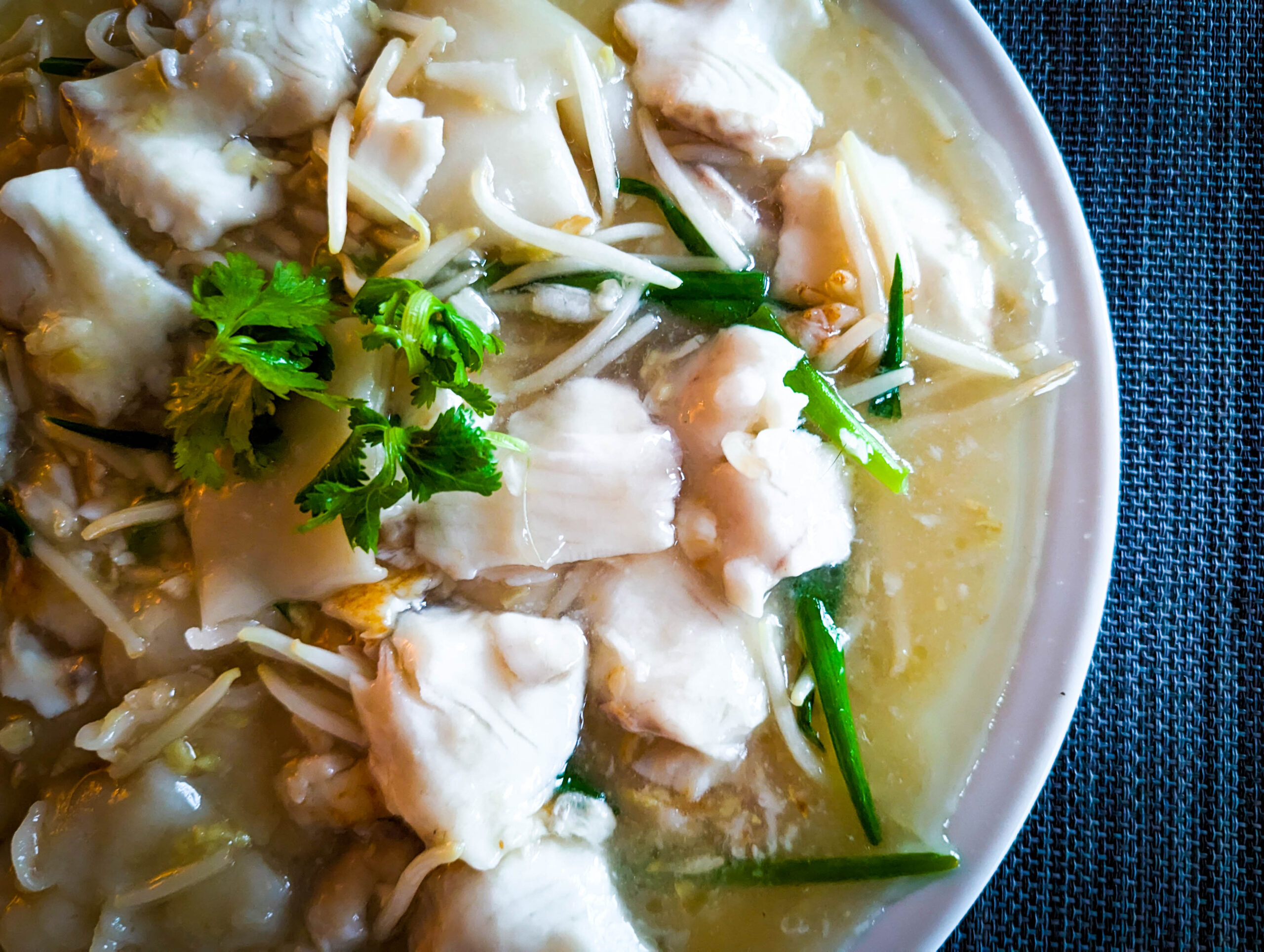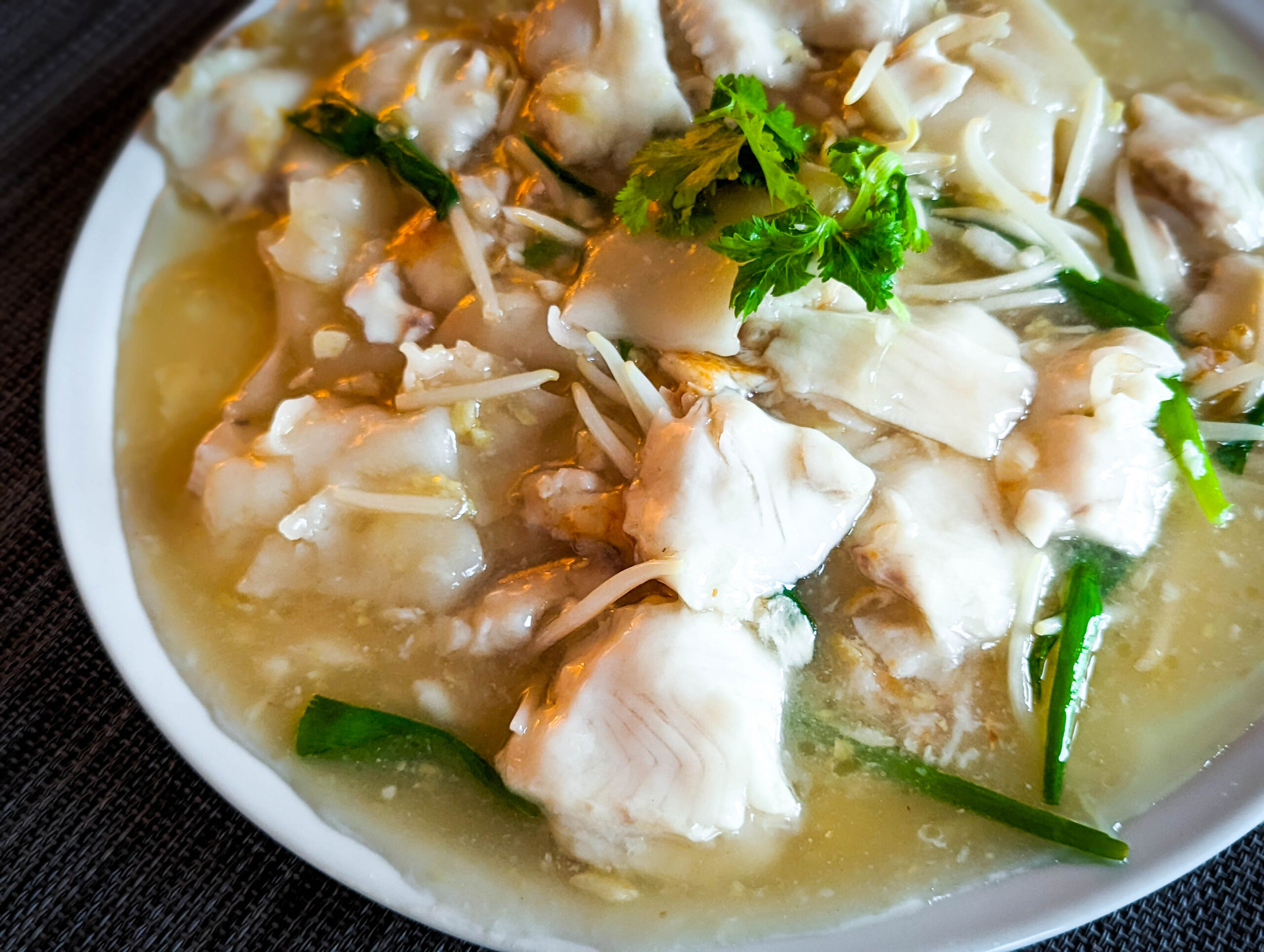“Sam Lou Hor Fan” 三捞河粉, sometimes spelled as “San Lao Horfun“, is a very popular Singaporean dish of Chinese Cantonese roots. Typically found at Chinese food stalls that offer a large variety of freshly-cooked dishes called “Zichartua“/”Zhuchaotan” 煮炒摊 stalls, this fish noodles dish can easily be replicated at home with fresh ingredients!

What does the name “Sam Lou Hor Fan” 三捞河粉 mean?
The Chinese Cantonese verb “lou” 捞 means “to fish” or “to drain“, which refers to an action of taking something out of the water. The verb is often employed in noodles dishes which have first been cooked in water and then drained, thus the name “gon lou min” 乾捞麵 for tossed dry noodles.
In the context of this dish however, the word “lou” does not refer to the action of “to drain” as the noodles are served in a thick gravy, but rather to the fishing action using your chopsticks when having this noodles.
As the aim is to create a universally WHITE dish: the whiteness of the rice noodles, the whiteness of the fish fillet and the whiteness of the beansprout stems, when eating it, despite the inability to fully visually distinguish between them, you have to “triple fish” (“sam” means “three”) all three ingredients together to fully enjoy the dish!
Which rice noodles should you use?
The rice noodles used in this dish is the Chinese Cantonese broad and flat rice noodles called “Sha Hor Fan” 沙河粉 or “Hor Fan” 河粉 in short, commonly spelled as “Horfun“. This is widely available as fresh noodles, unlike the dried rice noodles commonly seen in Asian supermarkets. Even the frozen “fresh” rice noodles are not really fresh, as rice noodles cannot stand being preserved. Both frozen and dried rice noodles are extremely brittle when rehydrated. Furthermore, I do not find the really broad Horfan that are normally used here, for better bite. If you do not procure fresh rice noodles where you live, you can certainly use the rehydrated dried ones with the knowledge that it will not be exactly the same.
What fish should you use?
As the dish requires the ingredients to look all white, the fish you use need to look white when cooked and should not disintegrate but rather look like the pieces of rice noodles.
The original Singaporean version uses the Giant Snakehead locally known as “Toman“. Here in Belgium, I use either cod or tilapia as a substitute.
What other considerations?
I used young fresh ginger, which is not common in Europe. You can use the green shoots of aged ginger. The reason is not to have sinews of aged ginger in the gravy. I have also used potato starch instead of corn starch to lock the marinade in the fish slices, as the former is clearer. The thickener remains corn starch as it is more effective. I have also used clear Chinese rice wine 白米酒 instead of the yellow Shaoxing rice wine to achieve a less brownish gravy required by the dish.
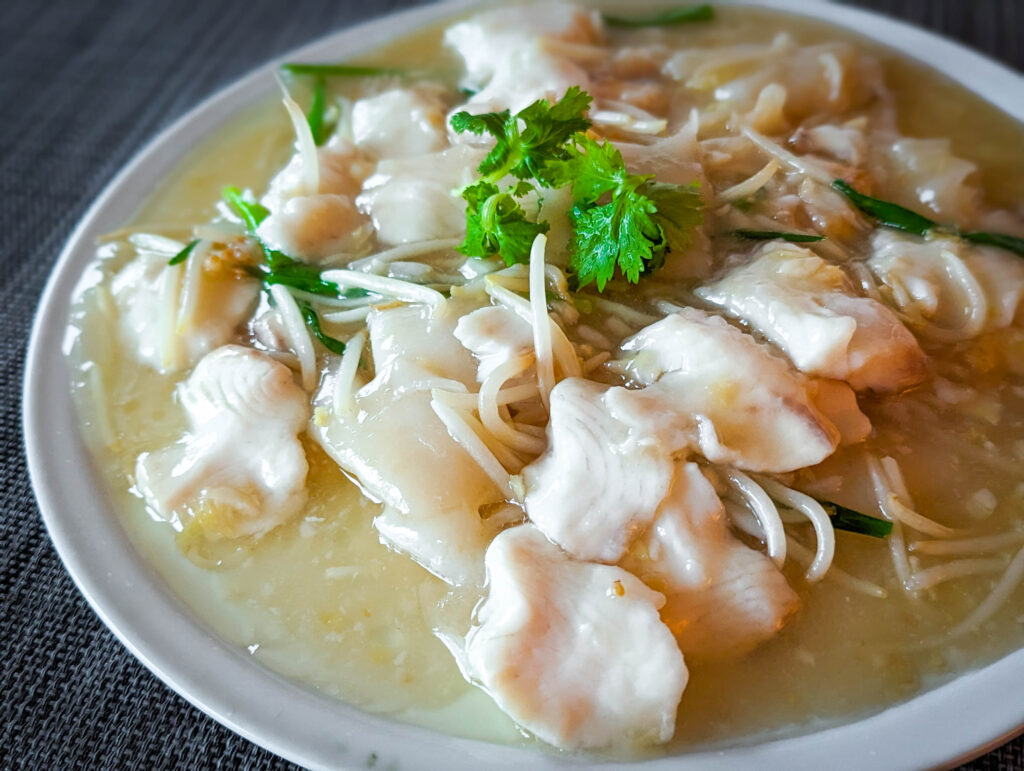
Ingredients:
- 3 boneless firm white fish fillets, around 300g
- 300-500g fresh Cantonese horfan rice noodles 沙河粉
- 100g bean sprout stems (without root or bean)
- 8-10 stocks spring onion
- 2 cloves fresh garlic, peeled
- 3cm fresh young ginger, peeled
- 300ml chicken stock (use 300ml water with 2 tbs chicken powder if unavailable)
- 2 tbs oyster sauce
- 150ml clear Chinese rice wine 白米酒
- 1 tbs potato starch
- 1 tbs corn starch
- Vegetable oil
- Salt and pepper
Serving: 2 persons
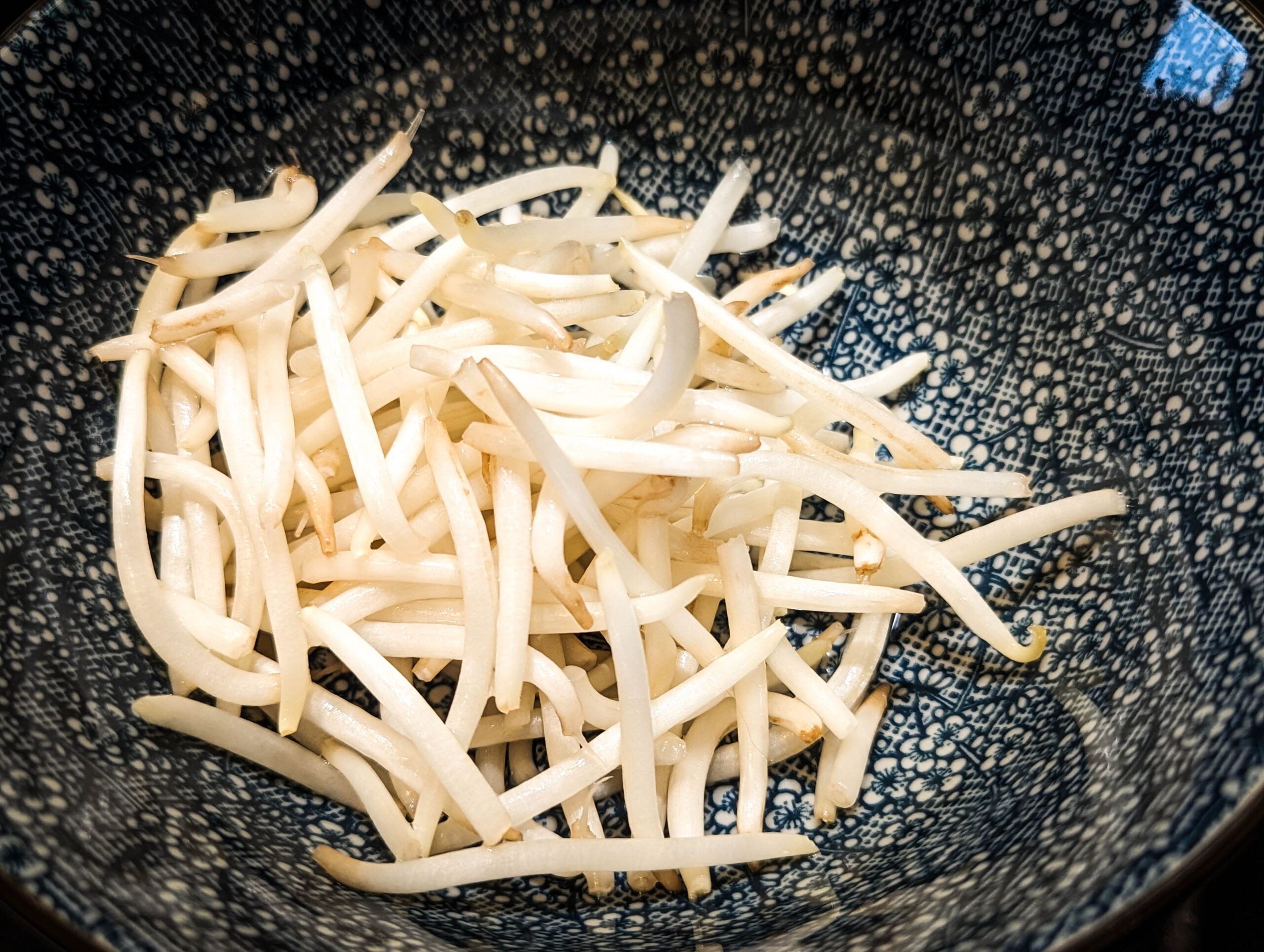
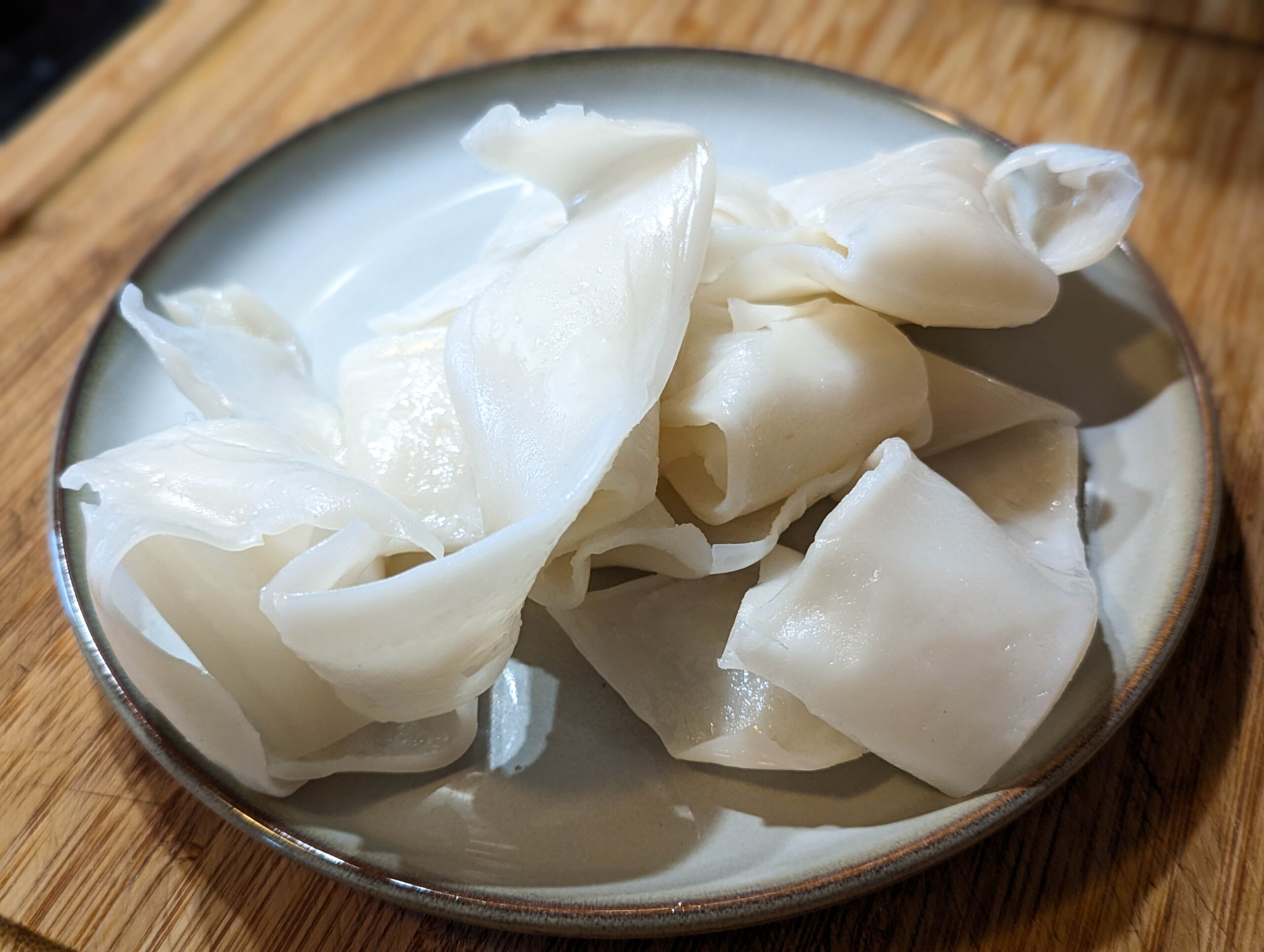

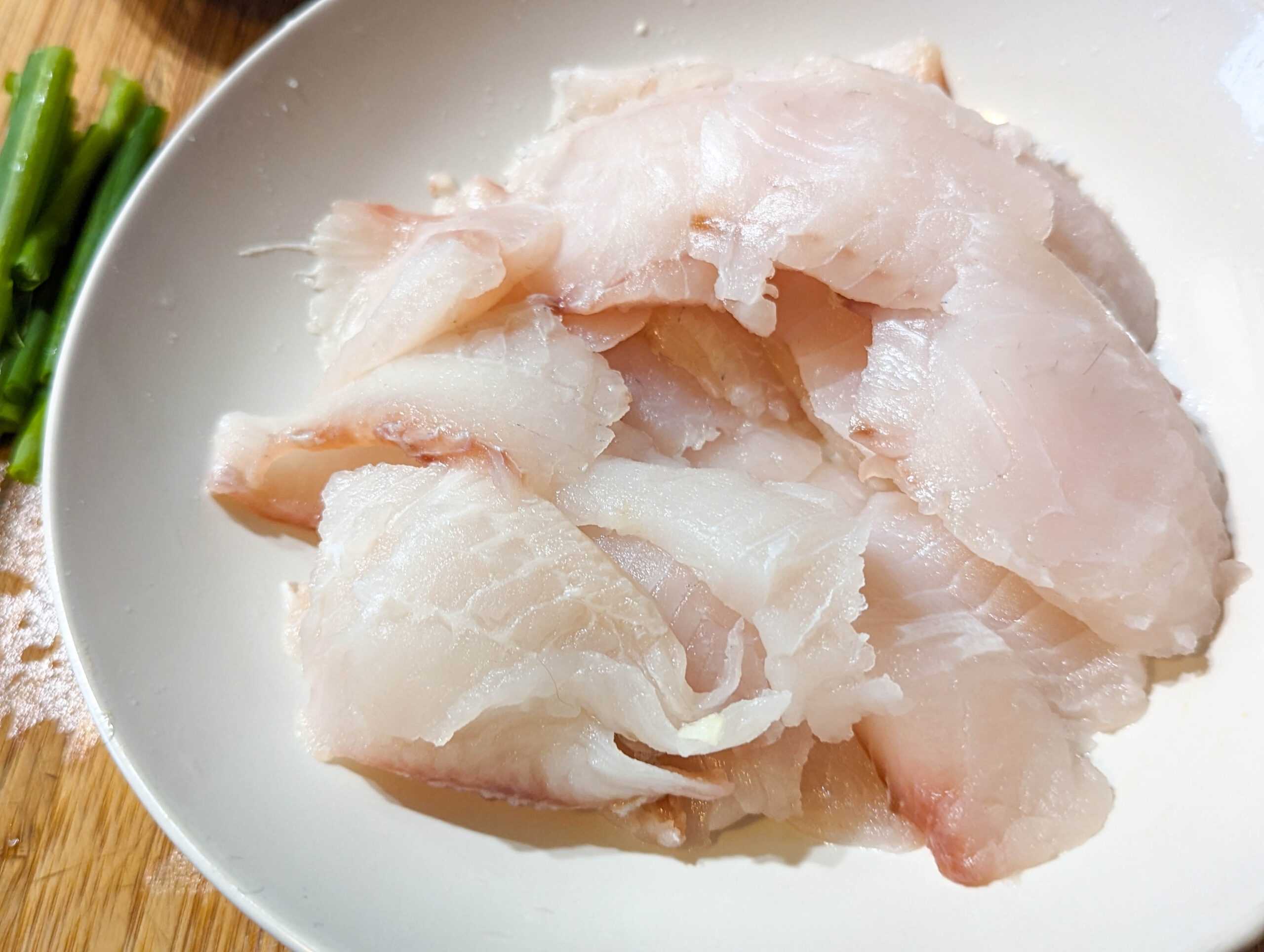
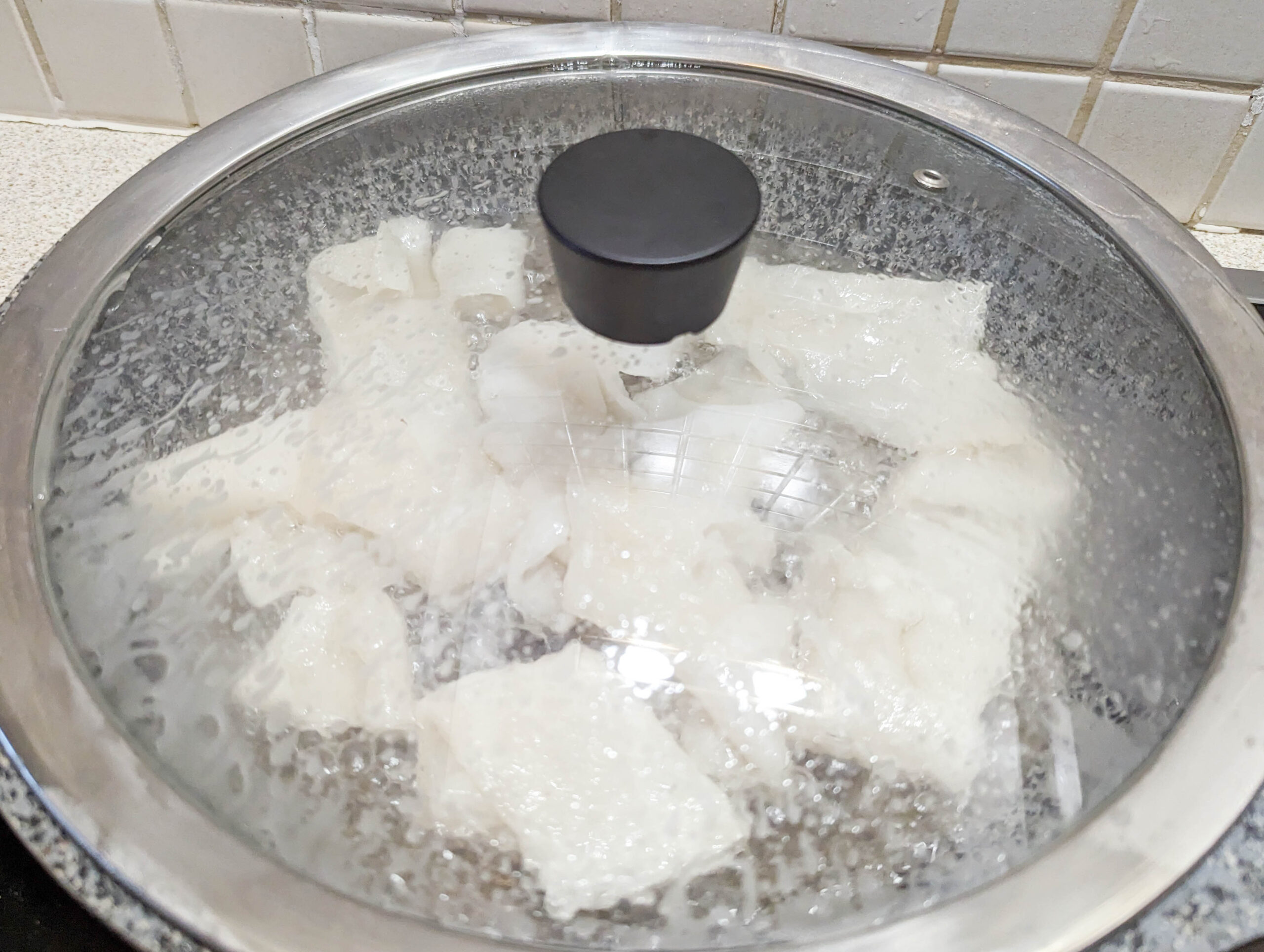
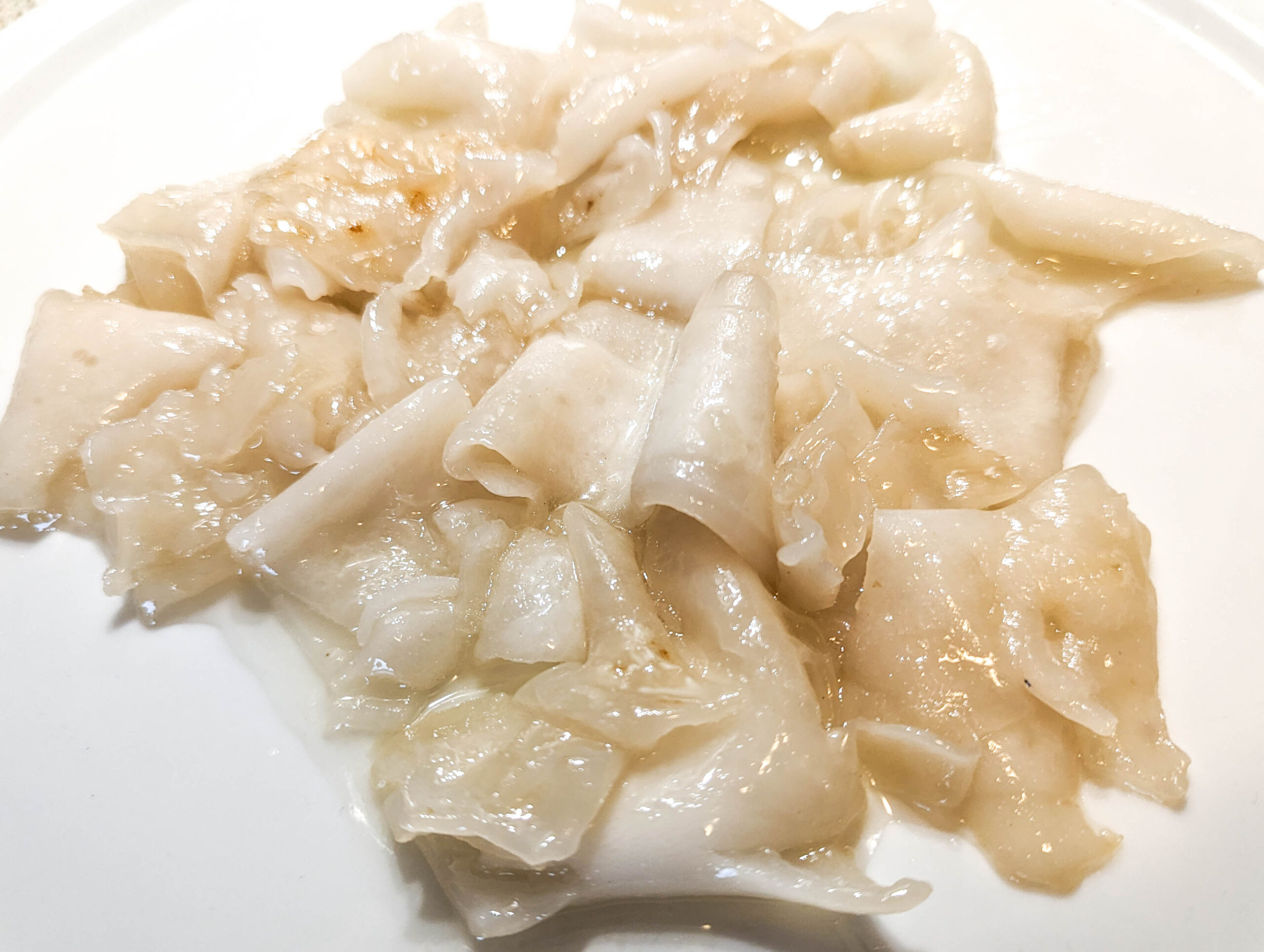
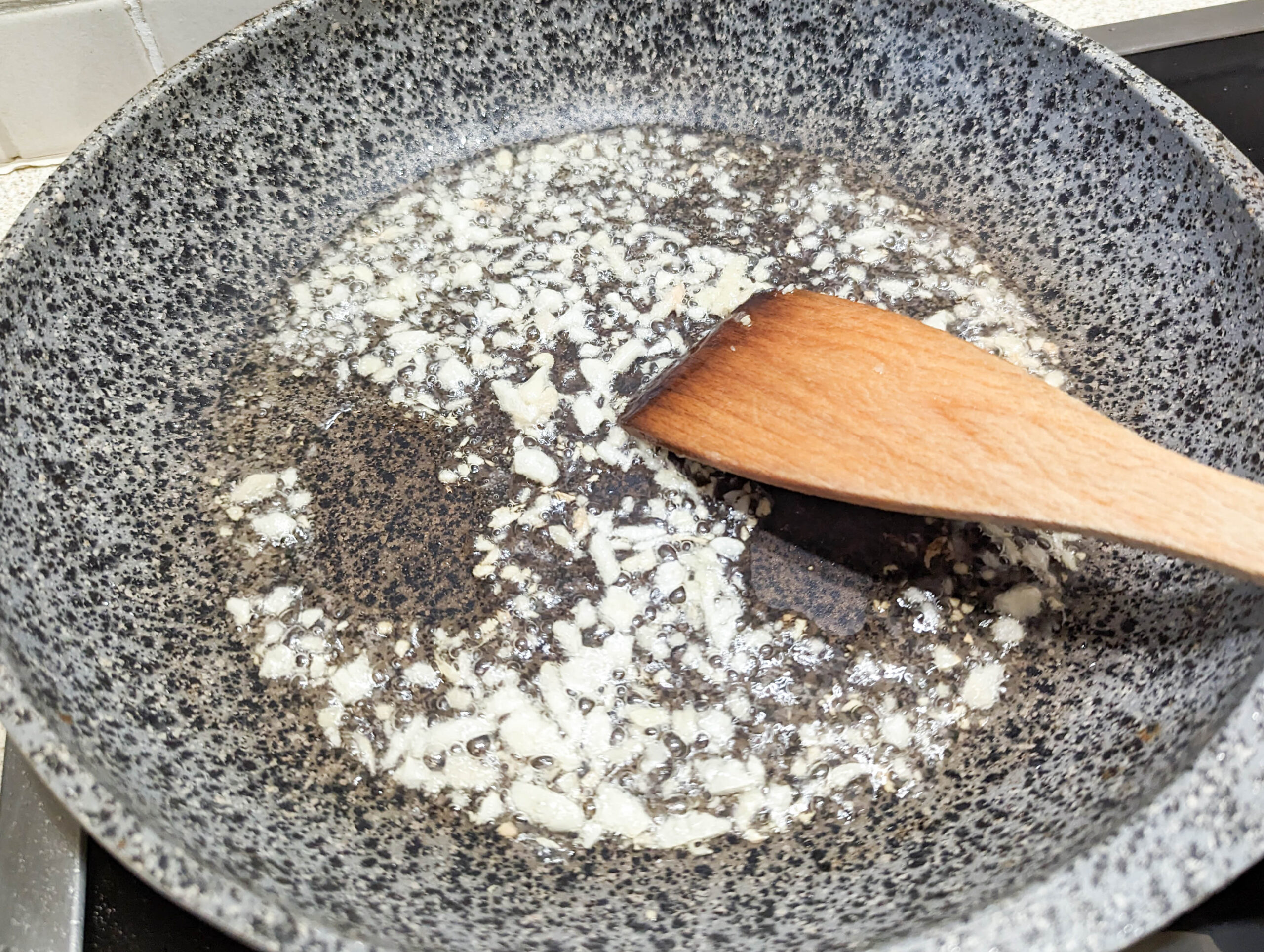
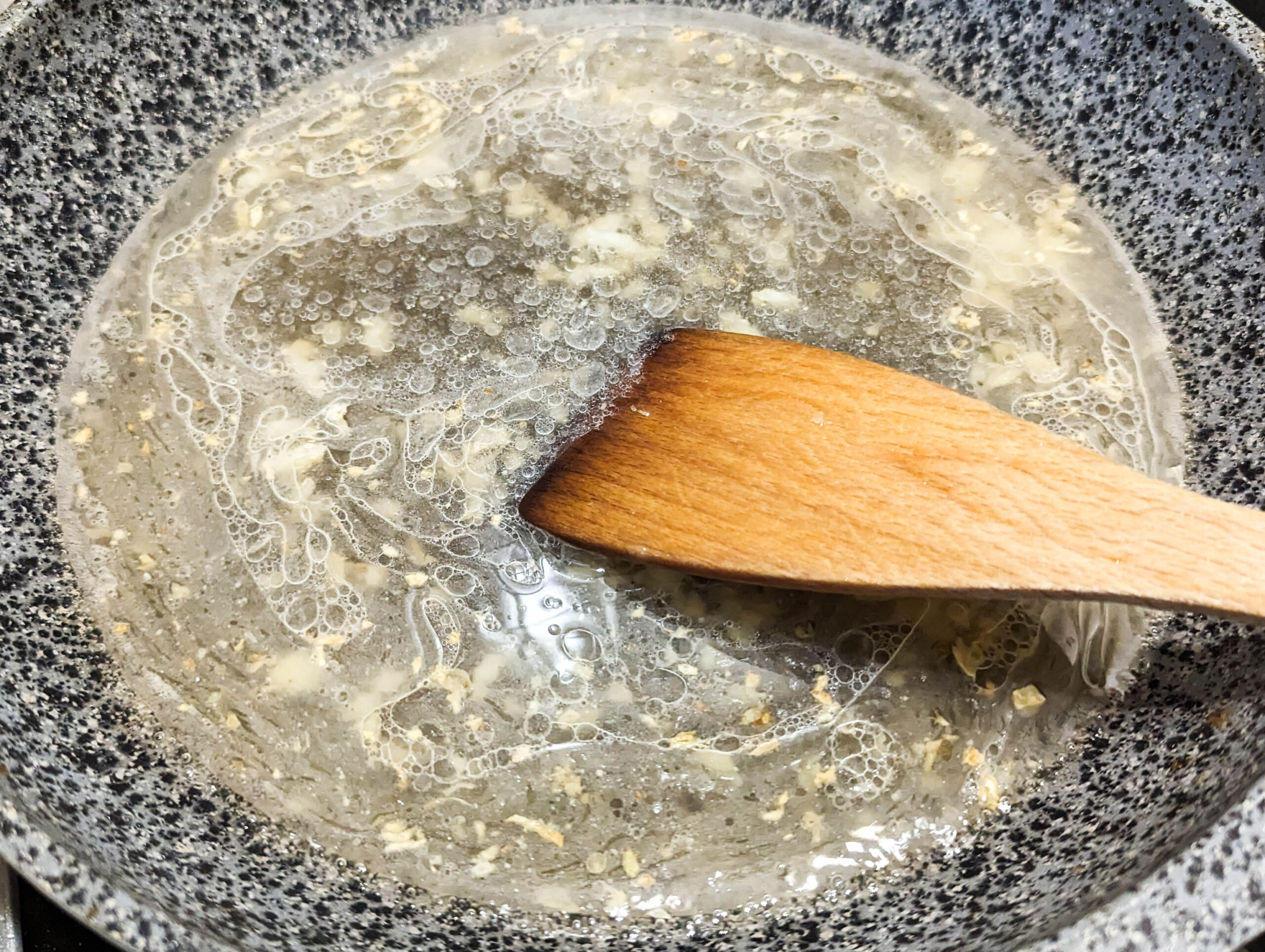
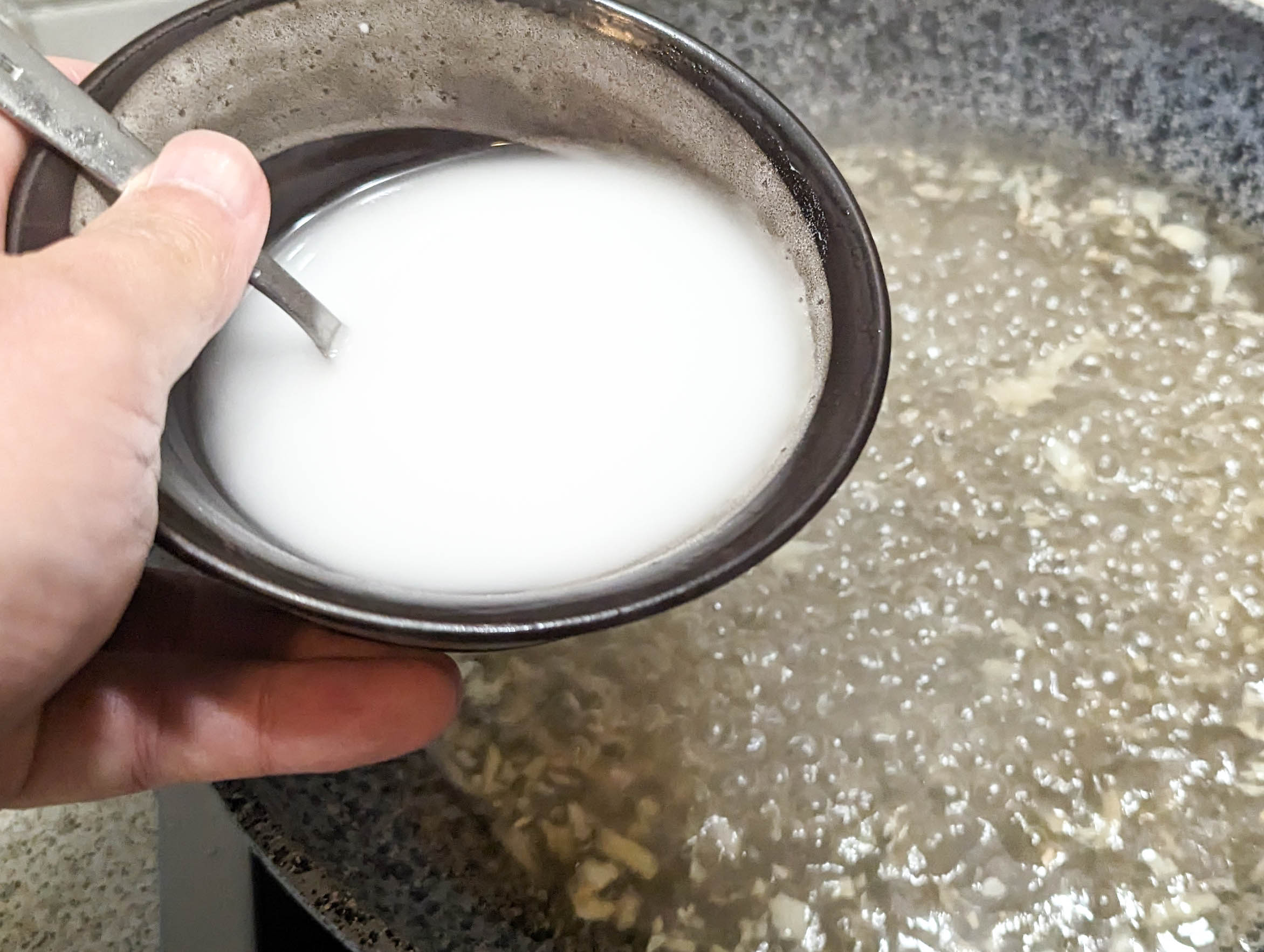
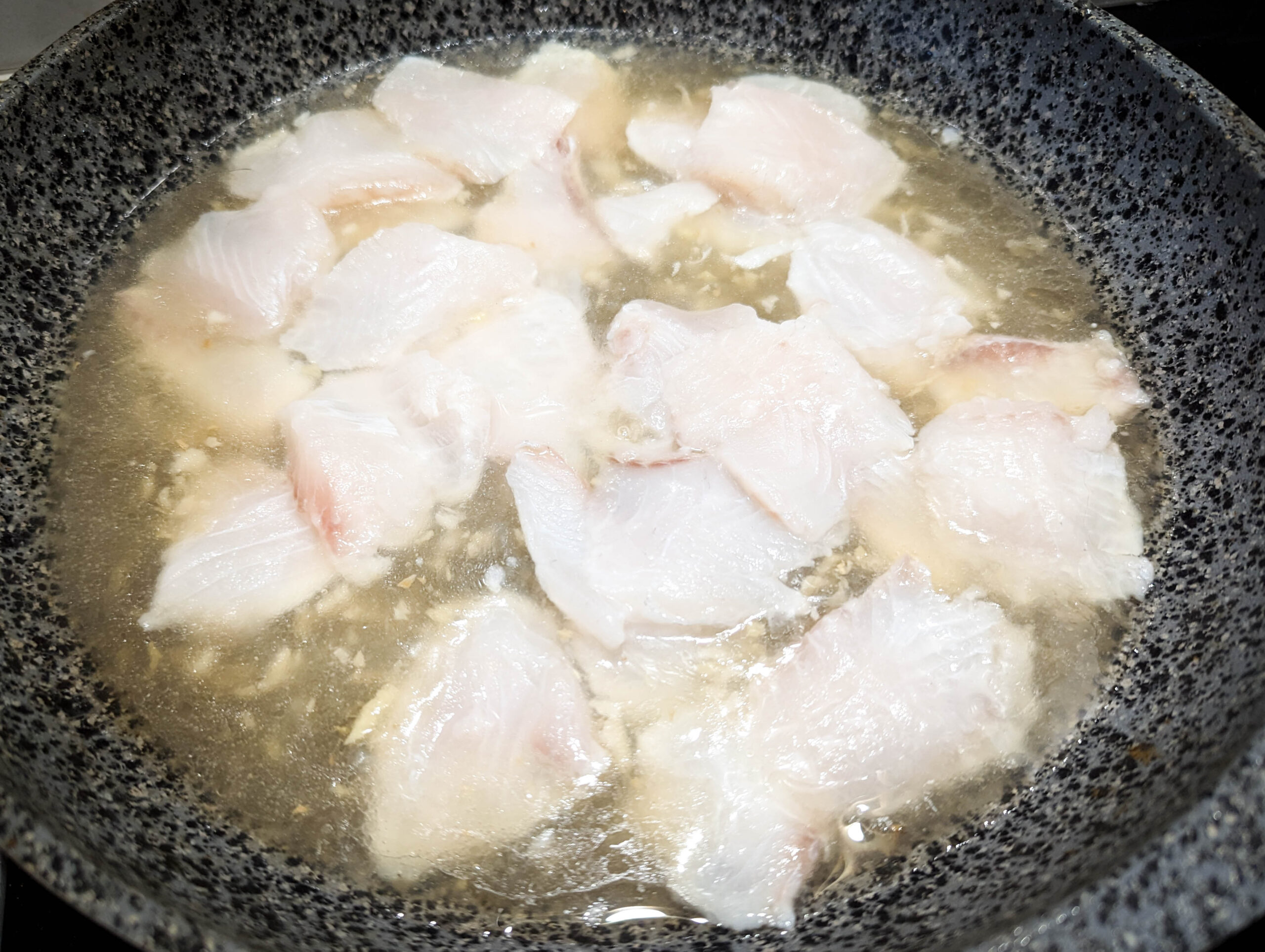
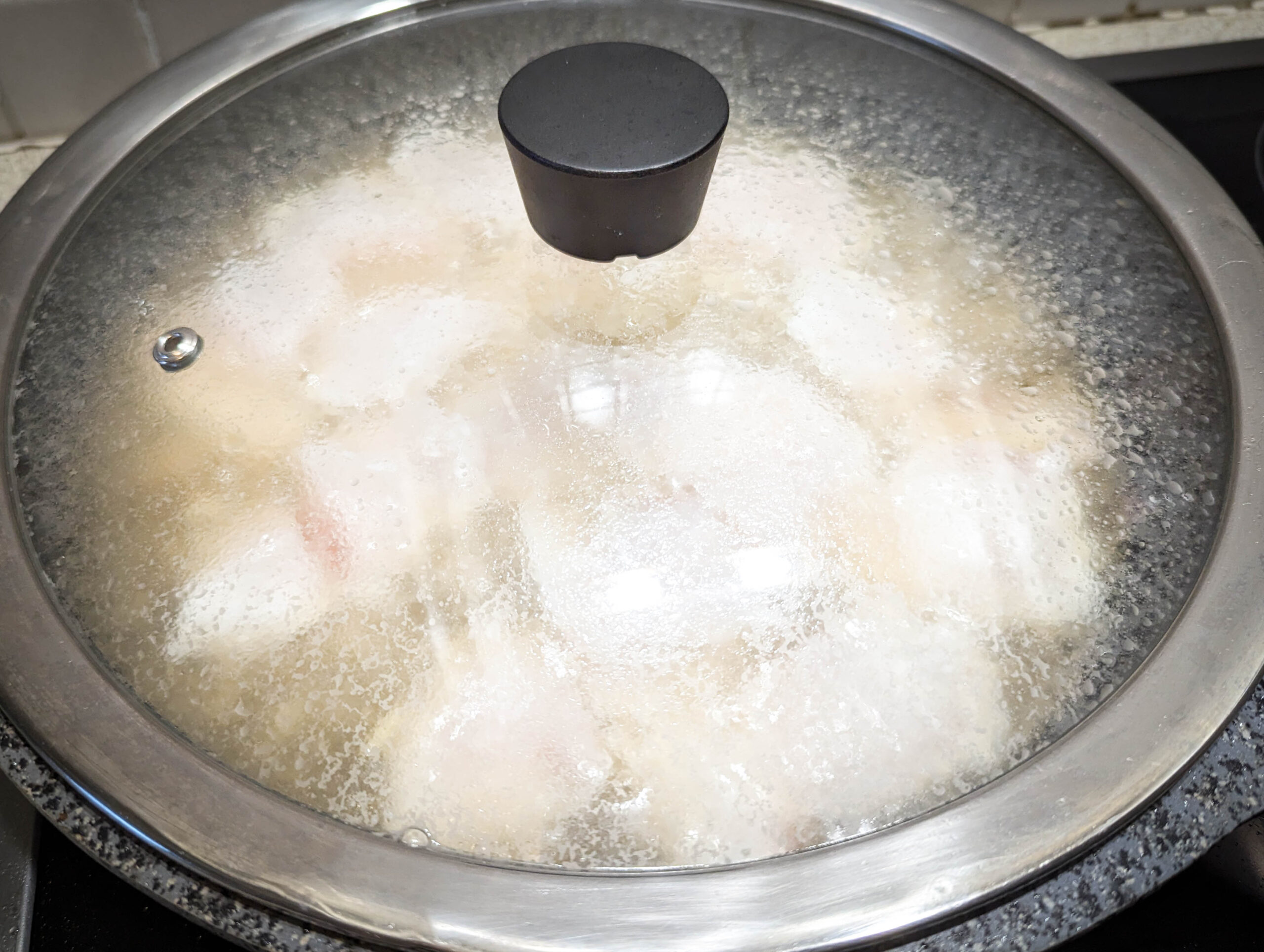

Instructions:
- Dry your fish fillets thoroughly with paper towels. Cut in thin slices. Add some salt, pepper, 2 tablespoon of rice wine, gently mix them. Add 1 tbs potato starch to lock the marinade in. Leave aside.
- Smash your fresh younger ginger and chop into a fine mash. Do the same with the garlic. Set both aside. Cut your spring onions into sections of 5cm. Set aside.
- In a bowl, mix your chicken stock, oyster sauce, rice wine as the basis for the gravy. Set aside.
- In a non-stick pan, heat up 3 tbs vegetable oil on high heat. When it is smoking, quickly stir fry your fresh rice noodles. Do not allow them to burn or stick together. Once they have slightly hard with a crunch, add in 100ml of your gravy mix and cover the pan. Let it simmer for 2 minutes so the noodles turn completely soft. Remove from heat and place the noodles on your serving plate.
- In the same pan, heat 3 tbs vegetable oil on medium heat and quickly stir fry your mashed garlic and ginger. Once the fragrance is released and before they turn brown, add in the rest of your gravy mix and bring it to boil.
- In a small bowl, mix your corn starch with 2 tbs. Slowly stir into your gravy to thicken it. Once the gravy thickens, quickly remove from fire. Place your fish slices by hand onto the hot gravy. Cover the pan and return to fire on low heat.
- After 1 minute, the fish should be cooked. Place your bean sprout stems and spring onions and cover the pan again, this time with the fire off.
- After 1 minute, pour the gravy gently over the rice noodles without breaking the fish slices. Serve immediately.
